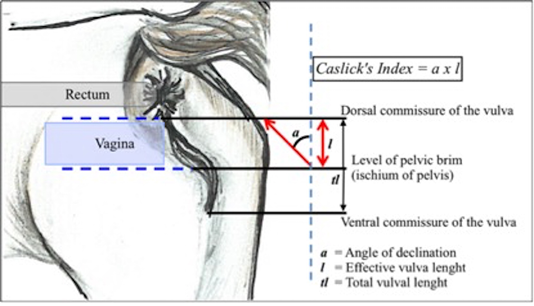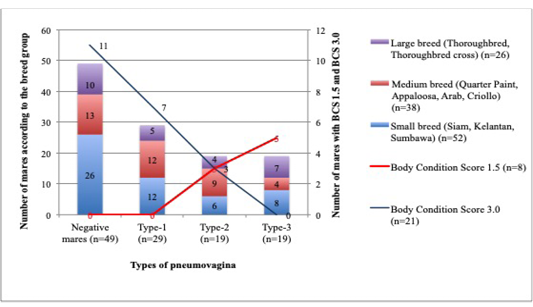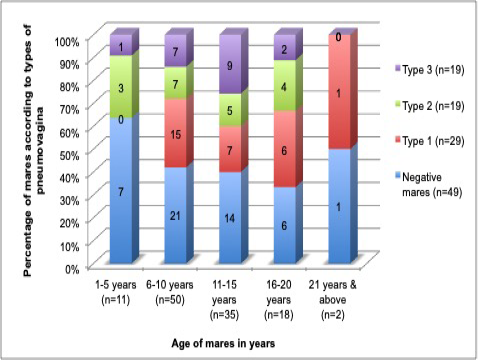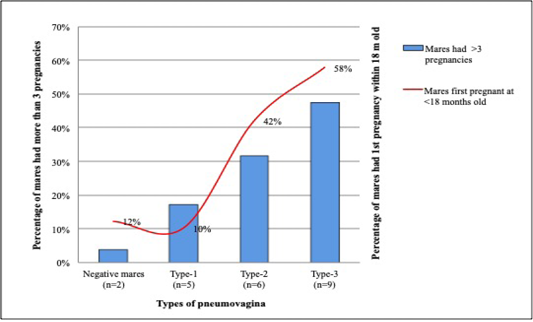Advances in Animal and Veterinary Sciences
The angle of vulva inclination was measured from the pelvic brim to the dorsal commissure of the vulva. CI is determined by the outcome of the vulva inclination angle multiplied with the effective vulva length. The figure was adapted from a chapter in a textbook by Pascoe (2007)
The pie chart shows the percentage of mares (n=116) with the types of pneumovagina. There were type-1 (n=29), type-2 (n=19), type-3 (n=19) and negative mares (n=49) without any vulva inclination.
The mares were grouped according to the BCS and breeds for this analysis. A significant correlation between BCS1.5 (n=8), BCS3.0 (n=21) and the breed size of mares: small breed (n=52), medium breed (n=38), and the larger breed (n=26) with types of pneumovagina.
The age of the mares fairly distributed among the mares with all types of pneumovagina that indicate the age of the mares does not influence the types of pneumovagina. The group age ranged: 1 to 5 years old (n=11), 6 to 10 years old (n=50), 11 to 15 years old (n=35), 16 to 20 years old (n=18) and 21 years and above (n=2).
Mares that had its’ first pregnancy at early puberty showed higher cases of type-2 and type-3 pneumovagina. This trend is similar to mares that had more than three pregnancies.
There are 38 mares with type-2 (n=19) and type-3 (n=19) pneumovaginal showed inconsistent oestrus interval or no signs of oestrus. All (n=38) severe types of mares showed strong stallion reception during standing heat. Only 75% (n=22) of the mares with type-1 and 50% (n=24) with negative pneumovaginal showed strong standing heat during the teasing by the stallion.










